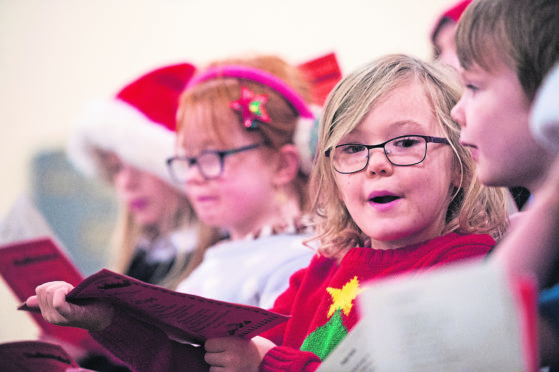
Singing carols has become an integral part of our Christmas traditions but their origins are far from festive.
Andrew Gant, author, university lecturer and choirmaster, tells Laura Smith the Honest Truth about carolling at Christmas.
What was the first carol?
We can’t precisely say what the first carol was because carolling emerged out of folk traditions. The earliest incarnations would’ve existed before written records began. Folk songs like The Holly and the Ivy are certainly very ancient and verses of it are thought to have been sung around the 15th Century but not necessarily sung to the same tune. O Come, Emmanuel derives from a song originally written in Latin in the 17th Century but the tune is thought to have been around since the 15th Century.
Where does the word carol come from?
While we don’t know for sure, it is generally agreed the word “carol” comes from the Old French “carole”, which referred to a ring dance accompanied by song. In some medieval poetry it describes a generally festive piece of music and is not always associated just with Christmas. In Shakespeare’s As You Like It, there’s a song that mentions: ‘This carol they began that hour… How that a life was but a flower’ and that is in reference to a party song that doesn’t have any connection to Christmas at all.
When were carols first sang in church?
The tradition of singing carols in church is an invention of the 19th Century. Before that a limited number of songs were sung in church because this was restricted by law to what was in the prayer book and the Bible. While Shepherd’s Watch their Flocks by Night is a paraphrase of a passage from Luke’s Gospel about the angels meeting the shepherds. That became the only Christmas Carol legal in church during the whole of the 18th Century.
Then, in the mid-19th Century and the Oxford movement in the Anglican Church, there was an explosion of ceremony and music. You had a more elaborate approach. The Victorian tradition of robed choirs singing accompanied by organs began here. Particularly in this period, they would use words and tunes borrowed from other traditions. For example, Good King Wenceslas is a Victorian poem put to the tune of a 16th-Century secular song about springtime.
So carol singing was once banned?
Yes, Puritans like Oliver Cromwell banned all kinds of celebration in the Church in 1644. This included church music, which they regarded as frivolous. They are famously said to have banned Christmas, and that included carols. But people carried on singing carols in secret. After the Restoration in 1650, the Puritan government collapsed and carol singing returned.
When was the first Christmas Eve service?
The Nine Lessons in Carols was invented in the early 20th Century by Eric Milner White, who was Dean of Truro Cathedral and shortly afterwards King’s College in Cambridge. It has become very much a fixture of Christmas ever since.
Where does the tradition of carol singing come from?
Carol singing for much of its tradition had nothing to do with the Church. People, usually working-class, would walk around the village, chap on doors, and ask for something to eat and drink in return for a song. It was a bit like getting a Christmas bonus and would become quite competitive, with the best singer getting a special reward like a jug of ale. This tradition was known as wassailing and was popular in the 18th Century. Carols were closely linked with local parish traditions, ceremonies and outdoor celebrations. Secular versions were often sung in pubs and that tradition remains in some places in the UK, like Cornwall.
What’s the most popular carol?
Silent Night is certainly one of the best-known worldwide. It was originally composed in 1818 by Austrian clergyman and organist Franz Xaver Gruber. It was famously sung during the Christmas truce on the Western Front in 1914 by troops in German, French and English, as it was the only carol all sides knew. But a recent poll found our favourite carol in the UK is In the Bleak Midwinter, but that might be thanks to its references in the hit show Peaky Blinders.

Enjoy the convenience of having The Sunday Post delivered as a digital ePaper straight to your smartphone, tablet or computer.
Subscribe for only £5.49 a month and enjoy all the benefits of the printed paper as a digital replica.
Subscribe